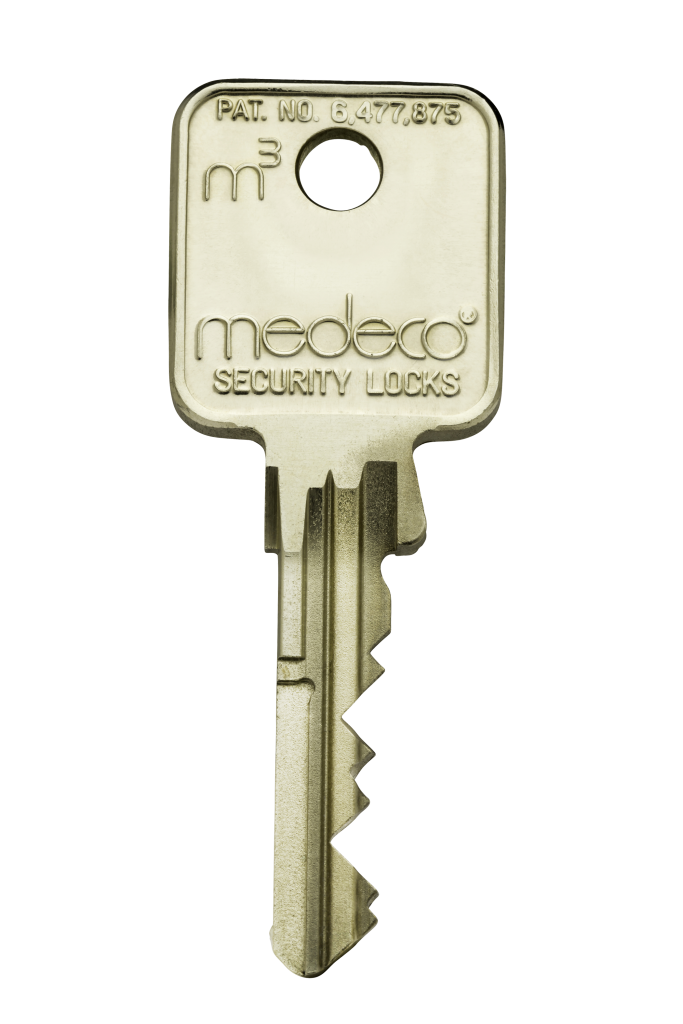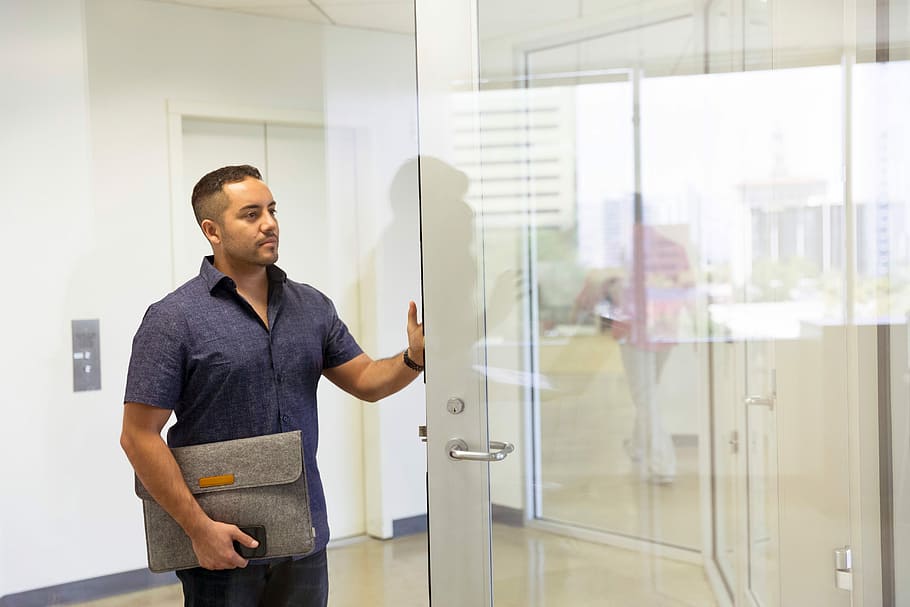As locksmiths, we pride ourselves in helping customers identify and install the best door hardware for their security needs. You may recall our post on Choosing the Right Commercial Lock Equipment. In that post, we shared the benefits of several different types of locking hardware. Selecting the right hardware can greatly enhance security in your business. However, your work is far from finished after you decide what type of locks to install. Creating an effective master key system is essential in giving the right access to the right employees. In this post, we will help you do just that.
For starters, we’ll look at choosing the type of key that fits you best. Many business owners skip this step entirely without ever fully understanding their options. From there, we will focus on creating a plan for employee access. Effective key systems rely on careful planning of these access levels. Mapping out the access allowed to individuals or groups of workers adds both security and convenience. It also allows business owners to hand out a single key to employees that gets them everywhere they need to go.
Finally, we’ll look at how you can expand your master key system. We have the ability to create new key levels within a business, or even create a master key system that works with several buildings. Planning for expansion now will help make sure we can expand your key system when needed. Let’s begin with a look at the importance of choosing the right key type!

Keys that provide key control, such as those that work with Medeco locks, help you track and limit access to keys.
Decide What Type of Key Best Fits Your Needs
Many people are unaware that keys come in a variety of “types” and styles. After all, keys all serve the same basic purpose of unlocking doors, right? Well, it turns out that business owners have more options with their keys than they often realize. Keys are made with different levels of security and access in mind. High-quality locks, such as our preferred locks made by Medeco, require high-security keys to unlock them. These locks have anti-burglar technology that makes them difficult to breach with drilling or picking attacks. Because of the technology built into the locks to prevent being compromised, they also require a robust, high-security key to properly operate them. While lower-grade locks with standard keys may work for some businesses, we recommend high-security lock hardware and keys whenever security is important.
Additionally, some key manufacturers — including Medeco — feature “key control” products. Key control systems allow business owners to decide who can make copies of keys. Remember that even the best locks only keep out those who do not have keys. Therefore, keeping keys out of the wrong hands is extremely important. When copying a key that is part of a key control system, customers must show identification. If their ID matches up with an “approved” individual, they can receive a copy of the key. If not, they get turned away without a new key. This keeps employees leaving a job from copying their office keys before turning them in. Just like with high-quality hardware and keys, we recommend key control systems for businesses that require strong security. Next, let’s look at how to map out the logistics of an effective master key system.
Figuring Our Who Can Open Which Doors
One of the biggest benefits of a master key system lies in the ability to minimize an office’s keys. Many of us have seen workers in businesses walking around with unwieldy rings of keys that work all of a building’s locks. A master key system eliminates that scenario, as long as you set it up carefully. In this section, we will explain how systems can be designed to allow workers to get everywhere they need to be with one key. Let’s begin our discussion with the type of key that the designer of the system usually carries around: a master key.
Master Keys
Of course, there could be no master key system without master keys. So what exactly do these keys do? Simply put, a master key generally works every key at a given location. Due to its name, many people assume that only one key fits under the “master key” umbrella. However, we can design a few different types of keys that still hold this designation. For example, “grandmaster” keys serve as master keys for multiple locations. These keys will come up again in our section on master key system expansion. Additionally, we often create “sub-master” keys for locations with more than one building. Sprawling commercial locations such as apartment complexes and golf courses often require these keys. While a sub-master key can work as a master key for one building, it does not work every key on the entire premises the way a master key does. Now, let’s examine a couple other types of keys below the master key level, starting with change keys.

Individual employees often receive a single change key giving them access to the building and their individual offices.
Change Keys
Change keys represent keys that offer limited access to a site’s doors. Often, these keys will work a single office within a business, as well as the doors required to reach this office and any other common areas within the building. For example, one employee’s change key could work the exterior doors of the building, the break room, and one office. Every employee could receive a key that opens their own office, as well as the common doors that everyone uses. Master keys and change keys make up two very important layers to a master key system. Next, let’s take a look at how we can “cross-cut” keys to give business owners even more flexibility in how they design their key systems.
Cross-Cut Keys
Sometimes, business owners may wish to provide a few keys that “cut across” the various types of keys that will define their master key system. These keys often go to part-time personnel or contractors who require a unique level of access to the building. For example, schools may offer change keys to teachers that give them access to the building and to an individual classroom. However, a custodian may need a key that opens every classroom door as well as one exterior door. Rather than provide a master key that lets someone into every door on the school’s campus, we would want to cross-cut a key that provides precisely the right access level.
Unlike change keys, we must plan for the need for these keys while designing the master key system. To use the same example from above, if we make 12 change keys that each unlock an exterior door and a classroom, we can continue creating new change keys as classrooms are added to the system one by one, provided we created room in the initial system design for extra classrooms. However, if we wanted to create a key that unlocked all of the classroom doors, we would need to know that before we created the system and began cutting keys. For that reason, make sure to consider the possibility for these unique keys while designing your master key system. Speaking of future-proofing your master key system, let’s look at the role that planning potential system expansion plays in the creation process.
Forging a Plan for Future System Expansion
When designing a master key system, it is very important to know how large the system may grow. Failing to do so could make for an expensive re-key and re-mapping of the entire master system to allow it to expand. For example, a business owner with two buildings will want to factor both locations into the initial master key system. This will allow a system “grandmaster” key to work both locations. From there, we can create master keys for both locations, and continue designing the system’s change keys.

Sitting down with your security company to map out potential master key system expansion can ensure that you create a system that meets all of your future security needs.
However, creating a system with only one location in mind will not allow us to add locations later on. Once the system’s “ceiling” is created it cannot be moved. For this reason, we always ask business owners how many locations and different levels might be needed in the future when creating an initial system design. If we create a system with a potential for 25 unique locations and only 20 locations ever end up being keyed to the master key system, there is no harm done. On the other hand, creating a 20-location system will not allow us to add a 21st location. Therefore, we always recommend creating a system with as much potential expansion as you would ever need. Doing so ensures that you have an effective master key system for years to come.
Creating a Master Key System that Works for You
We hope that this post has given you the information you need to create an effective master key system. If you have any questions about the material in this post, please do not hesitate to contact us. We will be happy to answer any questions you may have about master key systems or security in general. Additionally, we provide free site surveys for both new and existing customers. While on site, we can address any concerns you may have, and also make our own suggestions. Creating lock and key security is an important part of any complete commercial security plan. Together, we can create a master key system that adds as much security and convenience to your business as possible!
